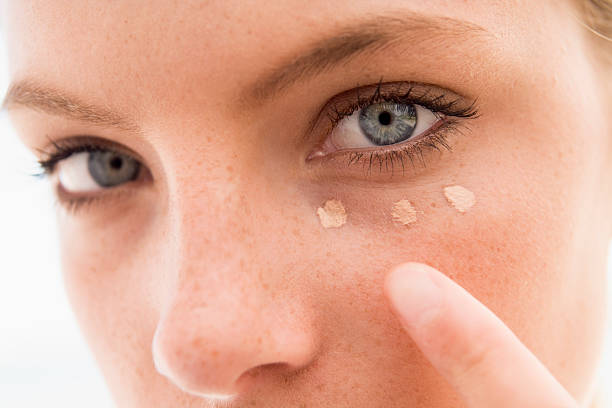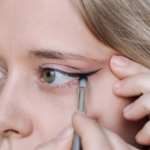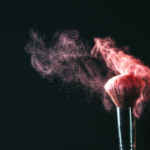Concealer is a versatile and essential tool in anyone’s makeup arsenal. Whether you want to hide blemishes, brighten dark under-eye circles, or create a flawless complexion, mastering the art of concealer application can elevate your makeup routine. In this article, we’ll delve into the key techniques and considerations for achieving the perfect concealer application.
Choosing the Right Concealer

Before you can perfect your concealer application, you need to choose the right product. Selecting the right concealer involves understanding your skin type and the areas you wish to target. There are three main types of concealers: liquid, cream, and stick. Liquid concealers are ideal for normal to oily skin and work well for covering larger areas. Cream concealers offer higher coverage and are suitable for drier skin types. Stick concealers provide convenience and are great for targeted application on blemishes.
When choosing a shade, it’s important to match your concealer to your skin tone for general coverage. For under-eye circles, opt for a concealer that is one shade lighter than your skin tone to brighten the area. Understanding your skin’s undertone—whether it’s warm, cool, or neutral—can also help in selecting a concealer that blends seamlessly.
Prepping Your Skin
Proper skin prep is a critical step you can’t skip if you want your concealer to look flawless and last all day. Start by cleansing your face with a gentle cleanser to remove any dirt or excess oils. Follow up with a lightweight moisturizer to hydrate your skin, ensuring the concealer goes on smoothly and doesn’t flake or cake throughout the day.
If you have dry skin, consider using a hydrating primer to create a smooth base. For oily skin, a mattifying primer can help control shine and create a more even surface. Don’t forget to give the primer a few minutes to set before applying your concealer.
Application Techniques
How you apply your concealer can significantly impact the end result. One popular method is the “”triangle of light”” technique for under-eye circles. Draw an upside-down triangle with the base under your eyelashes and the tip toward your cheek. Gently blend using a damp makeup sponge or a concealer brush for a seamless finish.
For blemishes, use a pointed brush to apply concealer directly on the spot and blend out the edges. If you’re covering larger areas of redness or pigmentation, use a concealer that matches your foundation and blend with a stippling brush or sponge.
- Always use a tapping motion rather than dragging to blend concealer.
- Set your concealer with a translucent powder to prevent creasing.
- For longer-lasting coverage, layer your products lightly and build where more coverage is needed.
Blending and Setting
Blending is perhaps the most critical step in achieving a natural-looking finish. Whether you use a brush, sponge, or your fingers, ensure that the edges of the concealer are seamlessly blended into your skin and foundation. A damp makeup sponge can work wonders for blending and making the concealer look like a second skin.
After blending, setting your concealer is essential to avoid creasing and ensure longevity. Use a translucent setting powder for this step. Lightly dust the powder over the concealed areas using a fluffy brush or a damp sponge. Be careful not to overapply powder, as it can make the skin look dry and emphasize fine lines.
Common Mistakes to Avoid
Even makeup aficionados can make mistakes when applying concealer. One common error is using too much product, which can result in a cakey appearance. Remember, less is more; you can always add more if necessary. Another mistake is neglecting to blend properly, leading to visible lines and patches.
Choosing the wrong shade or formula can also hinder your results. A concealer that’s too light can make blemishes more noticeable, while one that’s too dark won’t provide the coverage you need. Lastly, skipping the setting step can cause your concealer to crease, especially in areas with a lot of movement, like under the eyes.
Conclusion
Mastering the art of concealer application can transform your makeup routine, allowing you to achieve a flawless and polished look. By selecting the right product, prepping your skin, applying with the right techniques, and avoiding common mistakes, you can maximize the effectiveness of your concealer. With practice and attention to detail, you’ll be well on your way to concealing imperfections like a pro.
FAQs
What type of concealer is best for dry skin?
Cream concealers are generally best for dry skin, as they offer hydration and higher coverage, preventing the product from settling into fine lines and dry patches.
How can I prevent my concealer from creasing?
To prevent creasing, make sure to blend your concealer thoroughly and set it with a translucent powder. Using a primer beforehand can also help create a smooth base for application.
Should I apply concealer before or after foundation?
It is generally recommended to apply foundation first, as it provides a base layer that can reduce the amount of concealer needed. Concealer can then be used to target any remaining imperfections.
Can I use a concealer that is lighter than my skin tone?
Yes, but only for certain areas. A concealer that’s one shade lighter than your skin tone can be used to brighten under-eye circles. For blemishes or other imperfections, match the concealer to your skin tone.
What’s the best way to apply concealer for under-eye circles?
The “triangle of light” technique is highly effective. Draw an upside-down triangle under your eyes extending to your cheeks and blend well to achieve a bright, awake look.


